The ultimate goal of any addiction treatment program or method is to have the person struggling with substance abuse feel normal as quickly and safely as possible. Medication-assisted treatment, often referred to as MAT, is one of the most effective ways to ensure the patient’s safety and comfort. The benefits of medication-assisted treatment are substantial. MAT has proven clinically effective in improving treatment retention rates. It also reduces relapse rates and overdose deaths.
What Is MAT & How Does It Work?
Medication-assisted treatment is the use of prescribed medications in conjunction with counseling and therapy. It’s mostly used in the treatment of alcohol and opioid use disorders. These medications help relieve both physical and psychological withdrawal symptoms. It quickly (albeit temporarily) corrects the chemical imbalances that drug abuse causes within the body. For maximum effectiveness, it’s recommended that patients in recovery stick to their MAT treatment program for at least one year.
Although the pharmacological aspect of this treatment is highly effective, it’s important to note that this method does not rely on medication alone. As the name implies, MAT is only part of the solution. MAT is a comprehensive approach to addiction treatment that offers psychological support. It also offers vital behavioral and cognitive modifications for teaching healthy coping and trigger-avoiding tactics.
The 6 Benefits of Medication Assisted Treatment
The effectiveness of medication-assisted treatment cannot be overstated. Research has consistently shown that MAT is highly effective for managing the early and potentially dangerous early stages of recovery, such as detox, as well as helping with the maintenance phase of recovery years after the treatment program has been completed. The benefits of medication-assisted treatment include:
- Reduced cravings
- Safer withdrawal by reducing the extent of withdrawal symptoms experienced (as well as their intensity).
- Less discomfort during withdrawal
- Increases treatment retention rate
- Decreases relapse rate or other types of illegal drug use
- Improved mortality rate
One longitudinal study found that patients recovering from opioid addiction using MAT reported an abstinence rate of 40% after 3.5 years. Compare that to the 10% abstinence rate of individuals who only participated in detox.
Types of MAT Medication
There are several FDA-approved medications used in medication assisted treatment. These can vary depending on the type of substance they are treating.
Opioid Addiction
Medication-assisted treatment of opioid use disorder, methadone, buprenorphine, and naltrexone. Methadone and buprenorphine are relatively weak opioid derivatives. They can satisfy the body’s craving for opioids without producing a habit-reinforcing high. This makes them highly effective for weaning individuals off many opioids, including heroin, morphine, codeine, and even synthetic types such as oxycodone.
Methadone helps lessen the pain response, which is helpful for managing uncomfortable withdrawal symptoms. It is often used in the beginning stages of opioid use disorder treatment. Buprenorphine is used for long-term maintenance once pain relief becomes less of a priority.
Naltrexone is a long-acting opioid antagonist that attaches itself to opioid receptors without causing a high. By occupying the receptors, it makes it impossible for other opioids like heroin or codeine to take hold and cause a high.
Alcohol Addiction
The most commonly used medications to treat alcohol use disorder are acamprosate, disulfiram, and naltrexone.
Acamprosate helps balance glutamate and GABA neurotransmitters, reducing the severity of alcohol withdrawal symptoms. It does not cause adverse effects if the patient relapses.
Disulfiram is used as negative reinforcement. It causes the taker to have an acute sensitivity to alcohol, with incredibly unpleasant–but not dangerous–side effects like vomiting, breathing difficulty, or chest pain, with the smallest amount of alcohol consumption.
When used for treating alcoholism, Naltrexone reduces the desire for alcohol by blocking the part of the brain that creates pleasurable sensations. By interrupting the association of pleasure with a substance, it becomes much easier to break that cycle.
How To Get Medication Assisted Treatment
Medication-assisted treatment is one of the most effective means of addiction recovery. However, it’s important to remember that MAT is a combination of therapy and pharmacological intervention. It’s important that any potential addiction treatment program addresses both the physical and psychological symptoms of substance use disorder.
Anxiety and depression are just a few of the several mental illnesses that can arise due to prolonged drug abuse. If unhealthy behavioral or cognitive habits aren’t addressed, treatment merely cures the symptoms. It doesn’t prepare the individual for long-term abstinence. If you are curious about medication assisted treatment, find a drug rehab near you today to speak to a professional about whether MAT is right for you.

